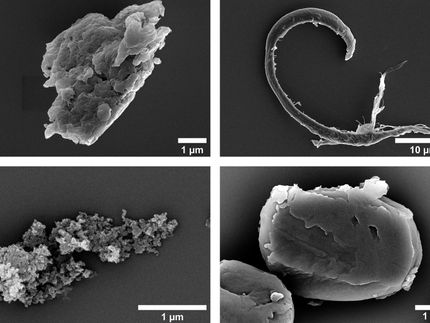Microplastics found in human bloodstream
PET detected most
Advertisement
A research team led by ecotoxicologist Heather Leslie and analytical chemist Marja Lamoree have become the first to demonstrate that plastic particles from our living environment end up in the human bloodstream.

Microplastics found in human bloodstream
Vrije Universiteit Amsterdam
The results of the research project, called Immunoplast, were published today in the scientific journal Environment International. The research shows that miniscule pieces of plastic from our living environment are absorbed into the human bloodstream.
Blood screened for five polymers
The research team consists of researchers from VU Amsterdam, Deltares and Amsterdam UMC, VUmc location. They developed an analytic method for establishing the trace level of micro- and nanoplastic particles in human blood. The method was applied to the blood of 22 anonymous donors. The blood was examined for the presence of five different polymers, the building blocks of plastic. The extent to which the individual polymers were present in the blood was also determined.
Three-quarters of the test subjects appeared to have plastics in their blood. The research was the first to prove that plastic particles can end up in the human bloodstream. Earlier indicators for this came from laboratory experiments. The current research shows that people absorb microplastics from their environment in their everyday lives and that the amounts are measurable in their blood.
PET detected most
The overall concentration of plastic particles in the blood of the 22 donors amounted to an average of 1.6 µg/ml, which is comparable to a teaspoon of plastic in 1,000 litres of water (ten large bath tubs). A quarter of the tested donors had no detectable quantities of plastic particles of any type in their blood. Polyethylene terephthalate (PET), polyethylene, and polymers of styrene were the most common types of plastic found in the blood samples, followed by poly(methyl methacrylate). Polypropylene was also analysed but the concentrations were too low for an accurate measurement.
The next question is how easy it is for these particles to move from the bloodstream into tissues such as in organs like the brain. Heather Leslie, working at VU during the research, explains: “We have now proven that our bloodstream, our river of life as it were, has plastic in it.” Marja Lamoree adds: “This dataset is the first of its kind and must be expanded to gain insight into how widespread plastic pollution is in the bodies of humans, and how harmful that may be. With this insight we can determine whether exposure to plastic particles poses a threat to public health.”
Health risks
This research was financed by the international NGO Common Seas and the ZonMw programme Microplastics & Health. With this programme, ZonMw intends to gain more insight into the potential health effects of plastic particulates and what can be done to limit possible harmful effects to health. The 15 short-term projects of this programme have now been completed. It has demonstrated that knowledge is still lacking and that further research is required to determine the health risks. In the Netherlands, this follow-up research is being conducted by the MOMENTUM consortium, in which VU Amsterdam is a partner. Research projects that study exposure to and the harmful effects of microplastics are underway in a European context as well.































































